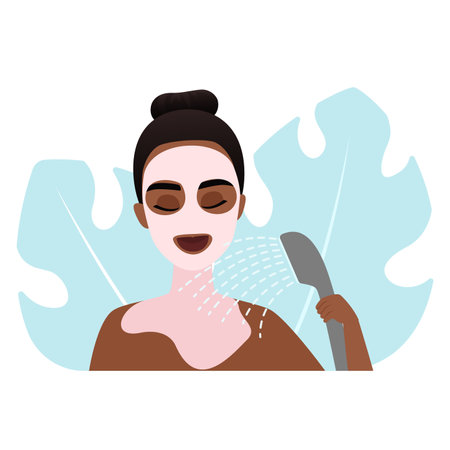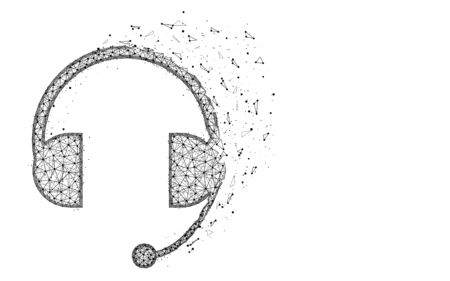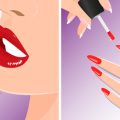Understanding the Basics: What Makes Up Mascara
When it comes to mascara, most of us are focused on the promise of length, volume, and dramatic lashes. But have you ever wondered what really goes into that sleek tube? In the United States, mascara formulas are carefully crafted with a blend of core ingredients designed for maximum impact, while meeting strict safety standards set by the FDA. Let’s break down the fundamental building blocks that create your favorite lash-enhancing magic.
Pigments: Bringing Color to Life
The most obvious component in any mascara is its pigment. Black is by far the most popular shade in the U.S., thanks to iron oxides, which deliver deep, rich color payoff. Brown mascaras use similar pigments but with a lighter touch for a more natural effect. These pigments are finely milled to coat each lash evenly without clumping or flaking.
Waxes: The Backbone of Texture
Waxes are essential for giving mascara its creamy texture and helping it cling to your lashes. Commonly used waxes include beeswax, carnauba wax (from palm leaves), and paraffin. These ingredients help mascara glide smoothly during application and build up layer by layer for customizable volume. Waxes also contribute to water resistance and flexibility, so your lashes don’t feel stiff or brittle.
Solvents: The Secret to Smooth Application
To keep everything suspended and easy to apply, mascaras rely on solvents—primarily water for washable formulas and sometimes gentle oils or alcohols for waterproof options. Solvents dissolve the waxes and pigments together, ensuring an even consistency that won’t dry out too quickly or go on patchy.
Bonus Ingredients: Conditioners & Film-Formers
Many American mascaras also incorporate conditioning agents like panthenol or vitamin E to nourish lashes and prevent breakage. Film-forming polymers wrap around each lash to lock in curl and hold shape throughout the day—so you can count on your look lasting from morning coffee runs to late-night hangs.
The Takeaway
Mascara may seem simple at first glance, but its formula is a delicate balance of science and artistry. By understanding these core components—pigments for color, waxes for texture, solvents for smoothness—you’ll be better equipped to pick a product that suits your unique style and lash goals.
Types of Mascara Formulas and Their Effects
When it comes to mascara, not all formulas are created equal. In the U.S., beauty lovers have a variety of lash goals—from bold volume to fluttery length, dramatic curl, or smudge-proof wear. Understanding how different mascara types work can help you select the right product for your unique lashes and desired look. Lets break down the science behind the most popular mascara formulas and see how they cater to diverse lash needs.
Volumizing Mascara
Volumizing mascaras are formulated with waxes, polymers, and sometimes silica particles to plump up each lash strand, making lashes appear thicker and more abundant. These formulas are especially beneficial for those with fine or sparse lashes who want a fuller, more impactful look—think glam night out or red-carpet vibes.
Lengthening Mascara
If your goal is long, defined lashes, lengthening mascaras are your best friend. These products typically contain fibers (like nylon or rayon) that adhere to the tips of your natural lashes, extending their appearance. They’re ideal for shorter lashes or anyone craving that “fanned out” effect.
Curling Mascara
Curling mascaras use special resins and lightweight ingredients that help hold a curl after using a lash curler—or even boost natural curl on their own. They lift straight lashes upwards, opening up the eyes and adding dimension. Great for those with naturally straight or downward-facing lashes who want a wide-awake look.
Waterproof Mascara
For all-day wear—rain or shine—waterproof mascaras feature water-repellent polymers that ensure your lash look stays put through humidity, sweat, tears, or even a summer pool day. While these can be slightly tougher to remove, they’re essential for athletes, busy professionals, or anyone in unpredictable weather.
Mascara Formula Comparison Table
| Type | Main Ingredients | Best For | Beauty Benefit |
|---|---|---|---|
| Volumizing | Waxes, Polymers, Silica | Sparse/Fine Lashes | Fuller & Thicker Lashes |
| Lengthening | Nylon/Rayon Fibers | Short Lashes | Longer & Defined Look |
| Curling | Lightweight Resins | Straight Lashes | Lifts & Opens Eyes |
| Waterproof | Water-Repellent Polymers | Active Lifestyles/Weather-Proofing | Long-Lasting Wear |
Diversity in Lash Types: Finding Your Perfect Match
The American beauty market celebrates diversity—and so do modern mascara formulas! Whether you have short, straight Asian lashes; lush but light curls; or anything in between, there’s a formula engineered for your needs. By understanding how each type works scientifically and aesthetically, you can confidently choose the mascara that helps you express your individual style every day.

3. The Role of Brush Technology
When it comes to mascara, the formula often gets the spotlight—but the real magic happens with the brush. In the world of beauty science, wand shapes, bristle materials, and applicator designs are meticulously engineered to amplify every swipe. Whether you want your lashes to look sky-high or perfectly separated, it’s the brush that makes all the difference.
Wand Shapes: Sculpting Every Lash
The shape of a mascara wand can totally transform your lash game. Curved wands follow your natural lash line and help lift each hair for an instant eye-opening effect—perfect for those mornings when coffee just isn’t enough. Hourglass-shaped brushes deliver volume at the roots and definition at the tips, while skinny, straight wands offer precision for lower lashes or hard-to-reach corners. American beauty brands often experiment with innovative shapes to address diverse lash types and preferences, reflecting a culture that values individuality.
Bristle Materials: From Classic to Cutting Edge
Bristle material is another key player in mascara impact. Traditional nylon bristles grip lashes firmly and distribute product evenly, giving you full control over clump-free definition. Silicone or rubberized bristles, on the other hand, are super flexible and great for separating lashes and building length without overload. Many U.S. brands now use hybrid bristles that mix these materials for a custom finish—because your lashes deserve options as unique as you are.
Applicator Designs: Customizing Your Look
Modern mascara applicators come in endless variations, designed with both science and artistry in mind. Some feature tapered tips for targeted application, while others have micro-bristles to catch even the tiniest baby lashes. Dual-sided brushes allow you to switch between volumizing and defining modes depending on your mood or occasion. It’s not just about coating your lashes—it’s about how you want to express yourself today. Ultimately, the innovation behind brush technology ensures that every swipe delivers maximum impact, tailored for the diverse beauty ideals celebrated across America.
4. Formulation Innovation: Science Meets Style
In today’s beauty landscape, mascara isn’t just about making lashes look longer or fuller—it’s the result of a dynamic fusion between scientific research and creative vision. Beauty brands in the U.S. are investing heavily in R&D to engineer formulas that not only deliver dramatic effects but also nourish and protect lashes. By partnering with chemists, dermatologists, and material scientists, these brands continually push the boundaries of what mascara can do.
The Power of Ingredient Technology
Modern mascaras often contain advanced ingredients designed for specific benefits, such as peptides for strengthening, plant extracts for soothing, and polymers for superior lift and hold. Here’s a breakdown of some popular ingredient technologies you’ll find in cutting-edge mascaras:
| Ingredient Type | Function | Benefit for Lashes |
|---|---|---|
| Peptides | Promote lash strength and growth | Helps prevent breakage and loss |
| Ceramides & Oils | Condition and moisturize lashes | Keeps lashes soft and flexible |
| Flexible Polymers | Create film around each lash | Enhances curl and definition without flaking |
| Natural Waxes (e.g., beeswax) | Add volume and structure | Builds bold, dramatic volume safely |
| Plant Extracts (e.g., aloe vera) | Soothe and protect sensitive eyes | Reduces irritation from daily wear |
Pushing Performance Boundaries
It’s not just about the “wow” factor—formulation innovation means balancing high-impact results with lash care. Waterproof technologies now incorporate gentle removal systems to prevent lash damage. Smudge-proof mascaras are tested under real-life conditions—think gym sessions or summer heat waves—to ensure they hold up throughout the day. Brands even use consumer feedback loops and AI-powered analysis to fine-tune performance based on diverse needs across different eye shapes, climates, and lifestyles.
The Future: Customization & Inclusivity
The next wave of mascara innovation is all about personalization and inclusivity. From hypoallergenic formulas for sensitive eyes to vegan-friendly options that avoid animal byproducts, the science behind mascara is becoming more attuned to individual preferences and values. By merging technology with self-expression, beauty brands empower everyone to find their perfect match—a mascara that delivers both statement-making style and mindful care.
5. Mascara Safety and Sensitivity
When it comes to mascara, safety is just as important as performance—especially for people with sensitive eyes or those who wear contact lenses. Modern mascara formulas often address these concerns through a combination of hypoallergenic ingredients, rigorous ophthalmologist testing, and thoughtful packaging design.
Hypoallergenic Formulas: Minimizing Reactions
Many leading mascara brands in the U.S. now offer hypoallergenic options designed to minimize irritation and allergic reactions. These formulas typically avoid common irritants like fragrance, parabens, or certain preservatives. Instead, they use gentle waxes, soothing botanical extracts, and purified water bases that are less likely to cause redness or itching. For consumers who struggle with allergies or sensitivities, seeking out mascaras labeled “hypoallergenic” is a practical way to prioritize eye health without sacrificing dramatic lash effects.
Ophthalmologist-Tested Products
The best mascaras for sensitive eyes often carry a label stating they’ve been tested by ophthalmologists. This means the product has undergone clinical evaluations to ensure it’s safe for use around the delicate eye area—even for those with pre-existing conditions or who wear contacts. These tests help guarantee that the formula won’t flake excessively, migrate into the eye, or disrupt vision—key factors for everyday comfort.
Safe Use Tips for Sensitive Eyes and Contact Lens Wearers
If you have sensitive eyes or wear contacts, practicing good mascara hygiene is crucial. Always replace your mascara every three months to prevent bacterial buildup, never share your mascara wand, and remove all makeup before bed using a gentle cleanser. Look for formulas specifically labeled as “safe for contact lens wearers,” which are designed to resist flaking and smudging throughout your day.
Ultimately, the science behind today’s mascaras doesn’t just focus on volume and length—it also prioritizes safety so everyone can enjoy bold lashes with peace of mind.
6. The American Perspective: Trends and Cultural Influences
In the United States, mascara is more than just a cosmetic staple—it’s a reflection of evolving beauty ideals shaped by diverse cultural forces. American beauty standards often celebrate bold, expressive looks, and this has led to a unique relationship with mascara. Whether it’s the ultra-voluminous lashes popularized on red carpets or the natural, fluttery styles favored in day-to-day wear, Americans use mascara to make a statement about individuality and confidence.
Pop Culture’s Powerful Role
Hollywood glamour has long dictated mascara trends, from the dramatic lashes of old Hollywood icons to the modern influence of pop stars and reality TV personalities. When a celebrity endorses a particular lash look—think lengthened, separated lashes or full, feathery volume—cosmetic brands quickly respond with new formulas designed to help consumers emulate their idols. This cyclical relationship between pop culture and product innovation keeps mascara at the forefront of makeup trends in America.
The Social Media Effect
Platforms like Instagram, TikTok, and YouTube have democratized beauty, giving rise to viral mascara hacks and user-driven trends. American consumers are now more experimental than ever, seeking out mascaras that deliver high impact results visible even through a camera lens. Viral challenges, before-and-after transformations, and influencer reviews all play into which formulas become must-haves. As a result, brands invest heavily in research to develop mascaras that not only perform well in person but also photograph beautifully—an essential factor in the age of selfies and live streaming.
Diversity and Inclusion in Mascara Formulation
The American market is also characterized by its diversity. Mascara formulas are increasingly designed to meet the needs of different eye shapes, lash types, and lifestyles. This inclusivity reflects broader shifts in American culture toward embracing individuality and offering products that cater to everyone—from waterproof options for athletes to gentle formulas for sensitive eyes. By listening to feedback from a wide range of consumers, brands continue to innovate with products that reflect real-life needs.
Looking Ahead: The Future of Mascara in America
As American tastes evolve alongside advancements in cosmetic science, mascara will remain an ever-changing symbol of personal style. With ongoing influences from pop culture, social media trends, and an increasingly diverse consumer base, the future promises even more specialized formulas designed for maximum impact—and maximum self-expression.


